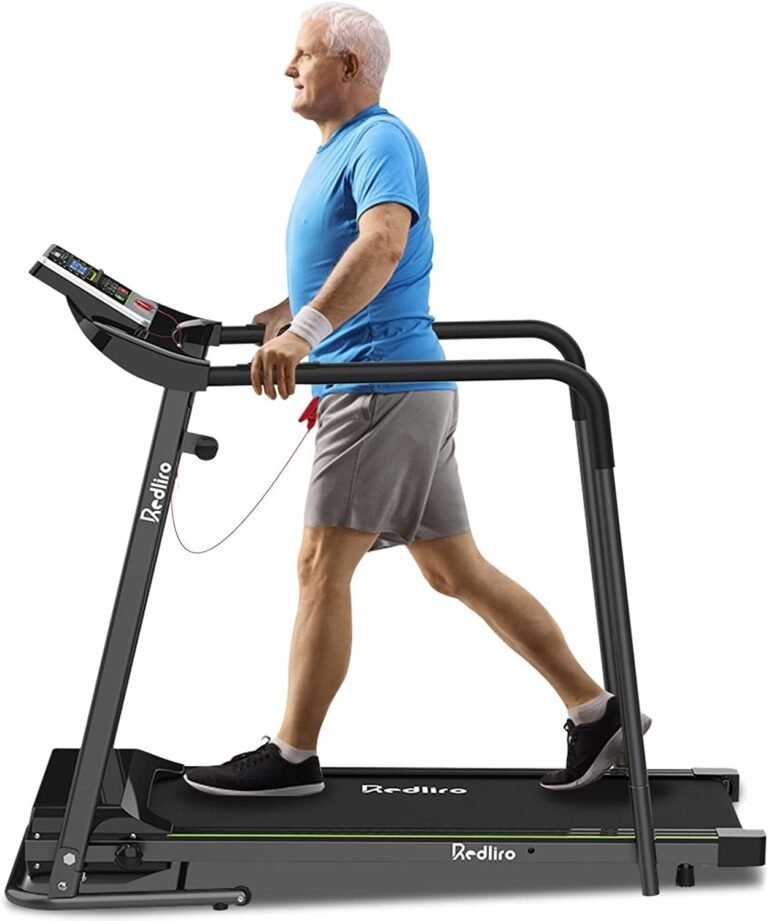Creating a Workout Plan: Tips for Beginners
Begin your fitness journey by pondering on the paramount principles of crafting a comprehensive workout plan. Before you embark on this transformative endeavor, it is crucial to consider your individual objectives, abilities, and preferences.
Each aspect of your plan requires thoughtful consideration to ensure optimal results and sustainability. By implementing these foundational tips for beginners, you can lay a solid groundwork for your fitness regimen.
The key to success lies in the meticulous planning and execution of your personalized workout strategy.
Key Takeaways
- Set SMART goals and break them into milestones.
- Choose exercises aligned with goals and abilities.
- Structure varied workouts targeting different muscle groups.
- Listen to your body, rest, recover, and adjust as needed.
Setting Your Fitness Goals
To begin your fitness journey effectively, set clear and achievable goals that will guide and motivate you throughout your workout plan. Goal setting strategies are crucial in helping you stay focused and committed. Start by defining what you want to achieve, whether it's losing weight, building muscle, or improving overall fitness. Make sure your goals are specific, measurable, attainable, relevant, and time-bound (SMART).
Break down your long-term goals into smaller fitness goal milestones. This approach will make your objectives more manageable and give you a sense of accomplishment as you reach each milestone. For example, if your ultimate goal is to run a 5k, start by aiming to run for 10 minutes without stopping, then gradually increase your endurance.
Assessing Your Current Fitness Level
Assess where you currently stand in terms of fitness by evaluating your strength, endurance, flexibility, and overall physical capabilities. This step is crucial as it sets the foundation for your workout plan and helps you understand your starting point.
Here are three key aspects to consider during your fitness assessments:
- Strength: Determine how much weight you can lift or how many push-ups and squats you can perform. This will give you an idea of your current muscle strength and areas that may need improvement.
- Endurance: Assess your cardiovascular endurance by jogging for a set distance or timing yourself during a brisk walk. Understanding your endurance levels will guide you in choosing the right intensity for your workouts.
- Flexibility: Test your flexibility by performing stretches for major muscle groups. Flexibility plays a vital role in preventing injuries and improving overall performance during exercises.
Choosing the Right Types of Exercise
When creating your workout plan as a beginner, it's essential to carefully select the types of exercises that align with your fitness goals and abilities. Exercise selection plays a crucial role in your workout routine's effectiveness and your overall progress. To start, consider your fitness variations; this means incorporating a mix of cardiovascular, strength training, and flexibility exercises to ensure a well-rounded regimen.
Cardiovascular exercises like running, cycling, or swimming are great for improving your heart health and burning calories. Strength training exercises such as weightlifting or bodyweight exercises help build muscle, increase metabolism, and enhance overall strength. Lastly, flexibility exercises like yoga or Pilates can improve your range of motion and reduce the risk of injuries.
Structuring Your Workout Schedule
Ready to take your workouts to the next level? Let's talk about crafting your weekly workout routines, the importance of rest days, and effective methods for tracking your progress.
Weekly Workout Routines
To create a well-balanced weekly workout routine, focus on varying your exercises to target different muscle groups and include both strength training and cardiovascular activities. Here are three essential tips to help you structure your weekly workout schedule effectively:
- Workout Variations: Incorporate a mix of exercises such as weightlifting, bodyweight exercises, yoga, or swimming to keep your routine engaging and prevent boredom.
- Time Management: Plan your workouts in advance and set aside specific times during the week dedicated to exercise to ensure you stay consistent.
- Balanced Approach: Aim to include a good mix of strength training and cardio sessions throughout the week to work different parts of your body and maintain overall fitness levels.
Rest Days Importance
Rest days are crucial for allowing your body to recover and repair after intense workouts. It is during these rest periods that your muscles grow stronger and your overall fitness improves. Remember, rest does not mean sitting around all day. Incorporating light activities like walking or yoga can be beneficial for active recovery, promoting blood flow and flexibility without straining your muscles. Additionally, focusing on sleep quality during rest days is essential for muscle recovery and overall well-being. Adequate rest and quality sleep are key components of a successful workout plan. Make sure to listen to your body and give it the rest it deserves to optimize your performance and prevent burnout.
| Benefits of Rest Days | Ways to Maximize Rest Days |
|---|---|
| Muscle Repair | Active Recovery Activities |
| Improved Performance | Quality Sleep |
| Injury Prevention | Proper Hydration |
| Mental Refreshment | Balanced Nutrition |
| Enhanced Motivation | Mindful Relaxation |
Progress Tracking Methods
After understanding the importance of rest days in your workout routine, a key aspect to consider for maximizing your progress is implementing effective progress tracking methods to structure your workout schedule.
To keep you motivated and on track, here are three essential progress tracking methods you can use:
- Utilize measurement tools: Use tools like fitness apps, smartwatches, or even a simple workout journal to track your sets, reps, and weights. This will help you see improvements over time and adjust your workouts accordingly.
- Set visual progress goals: Take progress photos regularly to visually see the changes in your body. Seeing your hard work pay off can be incredibly motivating.
- Leverage data analytics: Some apps offer data analytics to track your performance trends. This can help you identify what's working and what needs adjustment in your workout plan. Keep pushing yourself towards your goals!
Incorporating Rest and Recovery
Ensuring proper rest and recovery is key to maximizing the benefits of your workout plan. Recovery techniques play a crucial role in helping your muscles repair and grow stronger. Incorporating rest days into your routine allows your body to recover, reducing the risk of injury and preventing burnout. Remember, progress isn't just made during your workouts but also during your rest periods.
Getting an adequate amount of sleep is essential for optimal recovery. Aim for 7-9 hours of quality sleep each night to support muscle repair and overall well-being. Additionally, nutrition plays a vital role in the recovery process. Fuel your body with the right nutrients, including protein for muscle repair and carbohydrates for energy replenishment.
Tracking Your Progress
To effectively monitor your progress as a beginner in your workout journey, consider implementing a tracking system that captures key metrics and milestones. Tracking your progress not only helps you stay motivated but also provides valuable insights into your fitness journey.
Here are three essential ways to track your progress effectively:
- Progress Photos, Goal Setting: Take regular progress photos to visually see the changes in your body over time. Pair this with setting specific, achievable goals to keep you focused and driven towards your desired outcomes.
- Fitness Journal, Workout Logs: Keeping a fitness journal or workout log allows you to track your exercises, sets, reps, and weights used. This data helps you understand your progress, identify areas for improvement, and celebrate your achievements.
- Consistent Measurements: Regularly measure key metrics like weight, body measurements, and fitness levels. Tracking these numbers provides concrete evidence of your progress and highlights areas where you may need to adjust your workout plan.
Staying Motivated and Consistent
Maintaining your workout routine requires dedication and a strong focus on your goals to stay motivated and consistent. One powerful way to boost your motivation is by surrounding yourself with motivational quotes. These quotes can inspire you on days when you feel like skipping a workout or when your energy is low. Find quotes that resonate with you personally and use them as fuel to keep pushing forward.
Another effective strategy is to have accountability partners. These can be friends, family members, or workout buddies who share similar fitness goals. By having someone to check in with regularly, you'll feel more accountable for sticking to your workout plan. Accountability partners can offer support, encouragement, and even friendly competition to keep you motivated and consistent.
Adjusting Your Plan as Needed
As you progress in your fitness journey, remember that adjusting your workout plan is part of the process. Stay flexible in your routines and listen to your body's signals to make necessary modifications.
Embracing change and adapting your plan will help you achieve long-term success in reaching your fitness goals.
Flexibility in Routines
For optimal progress in your fitness journey, always stay open to adjusting your workout plan as needed to accommodate your evolving needs and goals. Flexibility in routines is key to long-term success. Here are three essential tips to help you stay on track:
- Stretching techniques: Incorporate dynamic stretches before your workout and static stretches after to improve flexibility and prevent injuries.
- Mobility exercises: Include exercises that focus on improving joint mobility to enhance your overall movement patterns and range of motion.
- Listen to feedback: Pay attention to how your body responds to different exercises and adjust accordingly to prevent burnout and promote recovery.
Listen to Your Body
Stay attuned to your body's signals as you progress in your workout plan, ensuring you make necessary adjustments to support your fitness journey effectively. Listening to your body is crucial for avoiding injuries and maximizing your progress. If you feel overly fatigued, experience persistent pain, or notice decreased performance, these are signs that your body may need more rest or a different approach. Incorporating proper recovery techniques like stretching, hydrating, and getting enough sleep is essential for your body to repair and grow stronger. Remember, it's okay to modify your plan when needed to accommodate your body's needs. By listening to your body and adjusting your routine accordingly, you'll set yourself up for long-term success in your fitness journey.
| Listen to Your Body | Recovery Techniques |
|---|---|
| Pay attention to fatigue | Implement proper stretching |
| Monitor for persistent pain | Ensure adequate hydration |
| Note changes in performance | Prioritize quality sleep |
| Be open to modifying your plan | Allow for rest days |
Conclusion
Now that you have all the tools to create a workout plan, remember that consistency is key! Like a sculptor chiseling away at a masterpiece, each workout session will shape your body and mind.
Stay focused on your goals, listen to your body, and make adjustments as needed. With dedication and perseverance, you'll see progress and achieve the results you desire.
Keep pushing yourself and remember that every step forward is a step closer to your fitness dreams!







